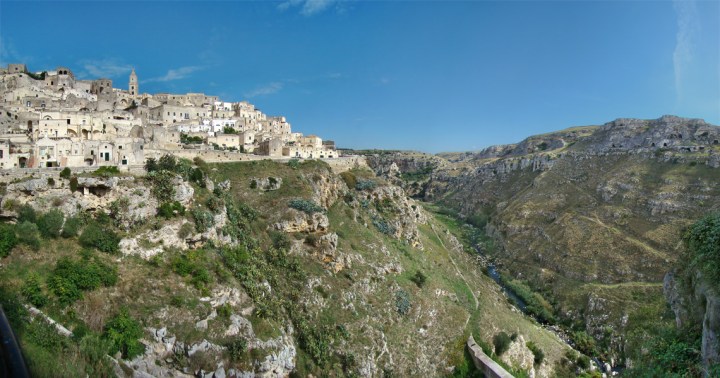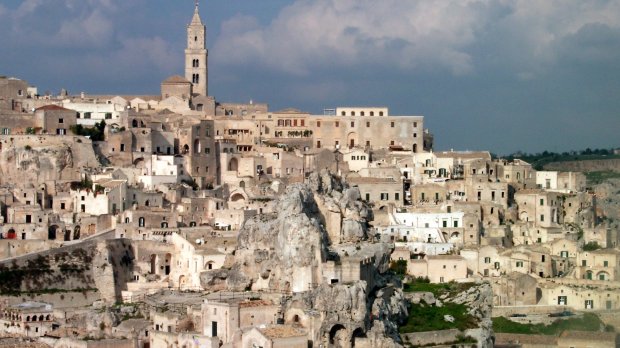The city of Matera is located in one of Italy’s least developed regions, Basilicata. But it boasts one of the country’s most captivating cities. Still largely unknown, Matera is one of the oldest cities in the world.
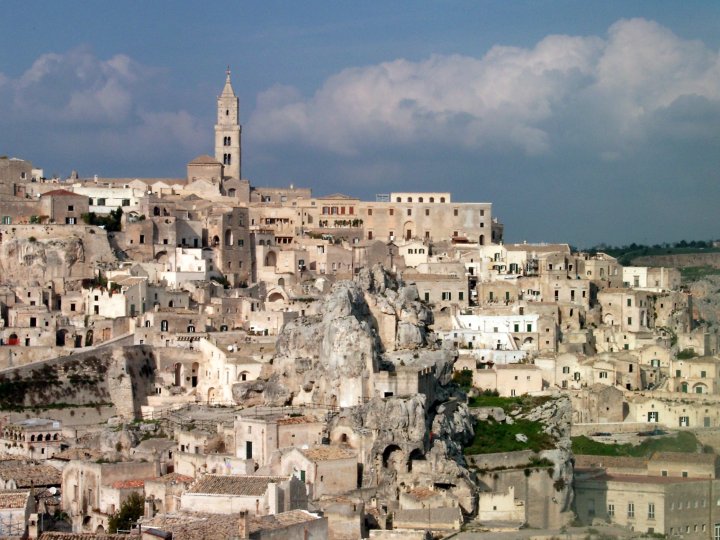
Favorite biblical movie location
In 1964, the controversial film director Pier Paolo Pasolini chose Matera as the location for his acclaimed black and white film, The Gospel According to St. Matthew. Beyond the fact that Matera was well-suited to portray the imagery of ancient Jerusalem and Palestine, the director chose to cast poor local residents in place of professional actors in order to better capture Matthew’s vision of Gospel poverty.
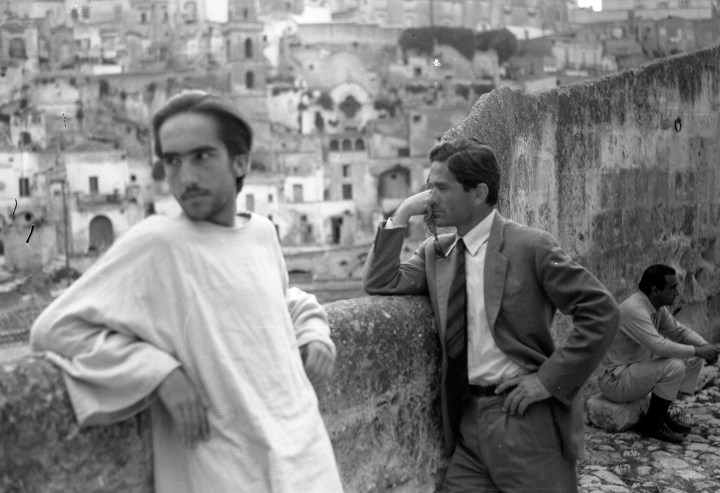
Matera began to be transformed when the Italian government began moving residents out of the caves in the 1970s and ’80s. It changed even more when Matera was declared a UNESCO World Heritage Site in 1993.
A decade later, American film director and actor, Mel Gibson followed in Pasolini’s footsteps with his modern adaptation of the life of Christ for his 2004 blockbuster film, The Passion of the Christ.
Matera today
Finally, as recently as 2019, Matera’s worldwide acclaim was cemented when it was designated the European Capital of Culture.
Today, Matera is no longer synonymous with poverty. Brimming with pubs, coffee bars, and swanky hotels, it attracts visitors from around the world.
The Sassi and rupestrian churches
The charm of Matera is principally for the “Sassi and Rupestrian Churches” – a unique series of ancient cave churches and dwellings. The Sassi are a complex of houses, churches, monasteries, and hermitages built into the caves of the Murgia – an extensive rocky plateau of tectonic origin located between central Puglia and northeastern Basilicata. They have been described by Fodor’s as “one of the most unique landscapes in Europe.”
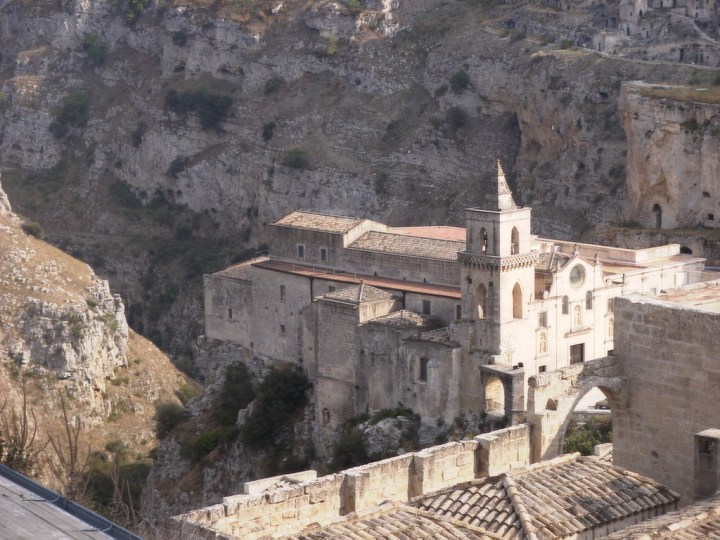
The caves date back to the Paleolithic period and have been inhabited since at least 7000 BC. The rupestrian churches were built mostly in the 8th century and used through the early 19th century.
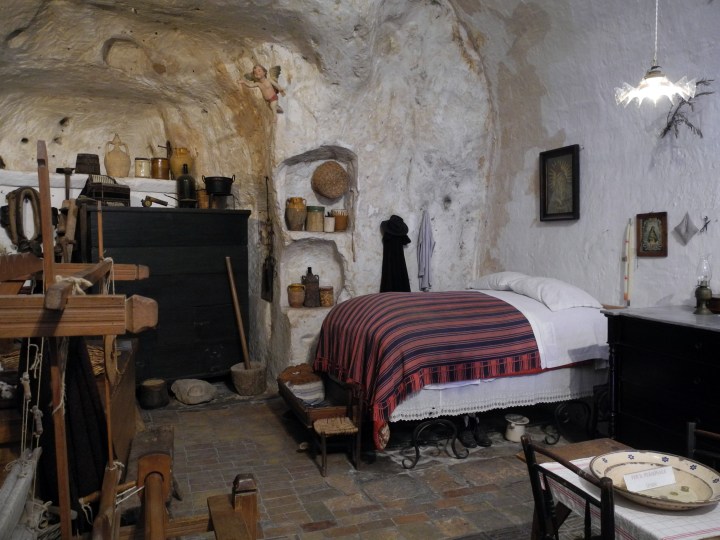
A walking itinerary through the old part of the city is a striking and memorable experience, especially for its unique churches.
The Sassi are separated into two sections: the more “modern” upper area (buildings date from the 17th-century Baroque era to the 20th century) and the lower area that extends down into the canyon.
Straddling the two sections is Matera’s cathedral. Dedicated to the Virgin Mary and St. Eustachio, this beautiful church served as part of a Benedictine monastic complex until 1000. In 1230, when Matera became an archdiocese, it was reimagined as a cathedral.
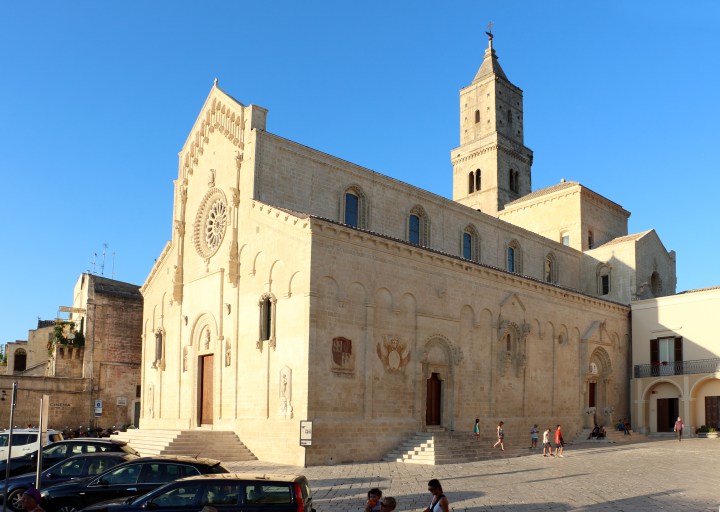
Other churches in the upper part of the city not to be missed are the Churches of San Pietro Caveoso, Purgatorio, San Francesco, and San Giovanni Battista.
In the heart of the upper district, there is the majestic convent of Sant’Agostino, considered an Italian national monument. Built at the end of the 16th century and rebuilt after the earthquake of 1734, the church is stunning for its frescoes and sculpted and painted altars.
The real charm of Matera lies in the lower section, the Murgia Materana Historical Natural Park. Among gorges, forests and streams, the archaeological cave dwellings date back to the Paleolithic era. The churches are even more intriguing.
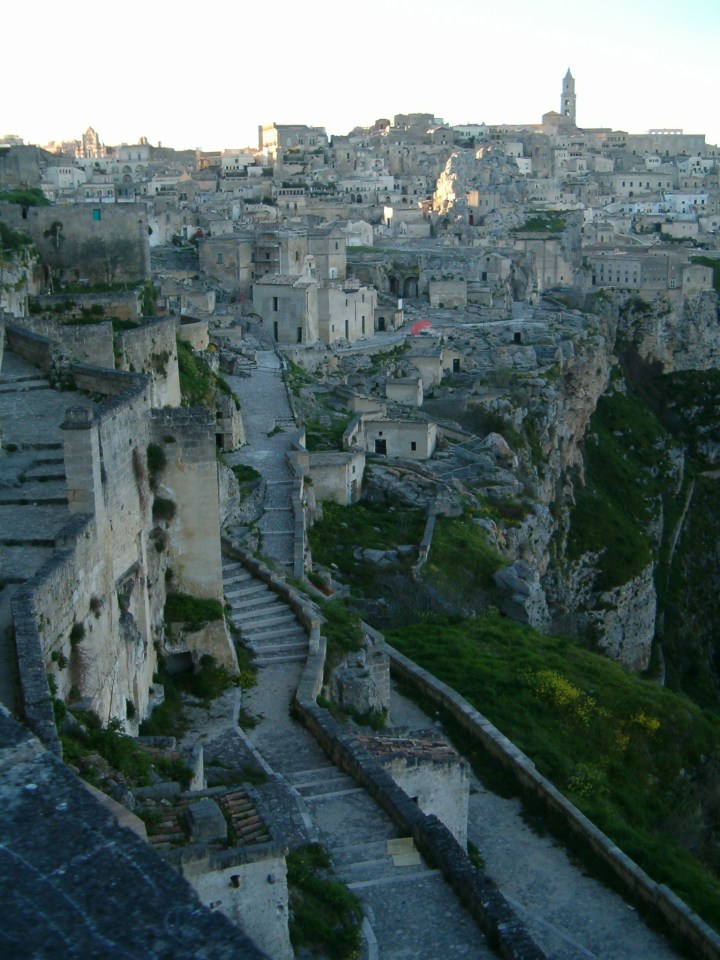
Known as “rupestrian churches,” they are literally carved into the rock. With medieval altars, frescoed walls, and Romanesque arches, they have the appearance of old churches in any one of Italy’s cities. But they are inside caves in a canyon.
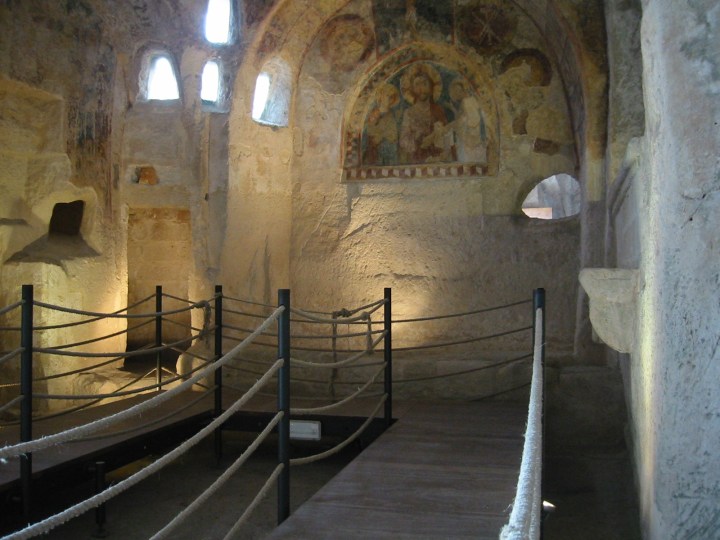
In all there are some 150 rupestrian churches in Matera. One of the most important ones is the Cripta del peccato Originale (Crypt of Original Sin), referred to by the locals as their “Sistine Chapel.” There are also stunning frescoes in the Church of Santa Barbara.
Two more not to be missed are Madonna della Virtù and San Nicola dei Greci. These two caves are connected to one another and form an entire monastic complex replete with of corridors, monolithic columns, rooms and chapels – all entirely carved into the mountain.
Lastly, a jaunt to the belvedere on the other side of the canyon is a must. Here there are extraordinary views of the Sassi. It is also the site of the crucifixion scene in the Mel Gibson’s The Passion of the Christ.
